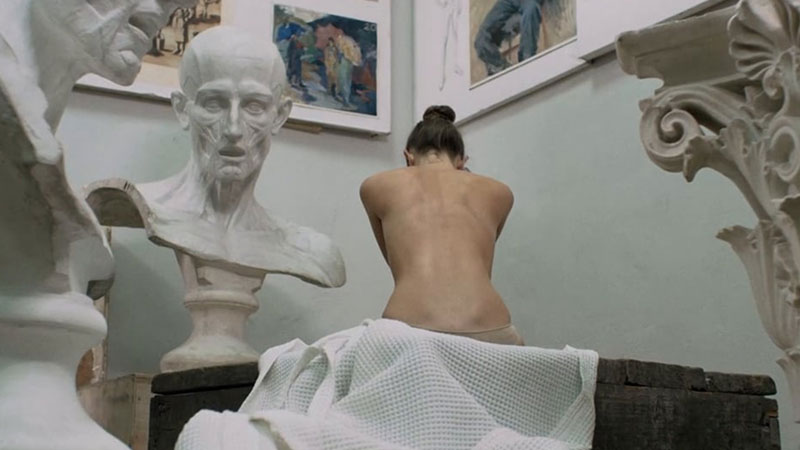A reimagining of the true story of Auguste Rodin and Camille Claudel, Meudon explores their history in an art world where power had shifted across gender. After being implicated into a torrid love affair by premiere sculptor Marceline Meudon, fledgling artist Jacque Gerard must navigate living in his mentor’s shadow and whether or not to choose love over his career.
The color for each frame of the film is constructed using hand painted acrylic on acetate.
Director’s Vision for ‘Meudon’
I’ve been fascinated by Auguste Rodin and Camille Claudel since the first time I heard their story. The romance of two brilliant artists working together to change the history of art until their own love story tore them apart. A tragedy wherein the less successful of the two destroys her work and dies in obscurity.
Aspects of the story have always stuck out to me. Claudel was unable to sculpt nude models and was hospitalized for her mental state. Her work was always examined in the context of Rodin, and her relationship to him largely cemented her place as a footnote in his narrative. These elements of the story to me point to clear patterns of power imbalance at the core of their shared history.
By taking individuals who have been historically out of power and retroactively giving it to them on film, Meudon aims to highlight the absurdity of the ‘great artist’ mythos that excuses the behavior of those in power and leaves their actions largely examined without critique. As affairs, abusive behaviors and uncomfortable opinions are justified for those who have shaped history, those at the sidelines have struggled to be allowed to make art, living lives full of regulation and conditional recognition where it existed at all. I believe in the dissonance between the behaviors of those in power and the people exhibiting them, we can better see hypocrisies and bizarre normalizations that have been accepted as fact over time.



